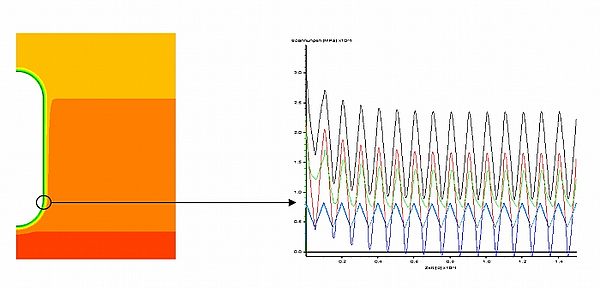Some geomechanical aspects of compressed air energy storage (CAES) in salt caverns
Some geomechanical aspects of compressed air energy storage (CAES) in salt caverns
project executing organisation: Federal Ministry for the Environment, Nature Conservation and Nuclear Safety (BMU)
project number: 0327628
The paper deals with some geomechanical aspects of compressed air energy storage in salt caverns. One main aim of the paper is to analyse weather it is technically and economically feasible to store and restore wind power in salt caverns. Because the availability of wind is time dependent whereas the need of electric power is continuous, an intermediate storage of wind power is required. The intermediate storage of wind power basically could be done by compressing air in times with more wind power than needed for the grid and decompressing air in times with less wind power than needed for the grid. The compressed air itself potentially could be stored in salt caverns. From the geomechanical point of view this simple idea causes some problems regarding to the cavern stability. In comparison to the well known geomechanical design of natural gas storage cavities four significant differences between gas and compressed air storage in salt caverns must be pointed out:
- The cyclic turnover between fluid injection and withdrawal for compressed air energy storage is a multiple of that used by natural gas storage.
- The maximum cavern inside pressure for compressed air energy storage is limited by the allowable turbine input pressure which is in a level between 30 and 80 bar.
- Cyclic loading by compressed air energy storage requires to superimpose thermal induced and mechanical stresses.
- Compressed air energy storage is defined by the need of an ordinary operation phase with atmospheric cavern inside pressure.
To present the load bearing behaviour of CAES caverns the results of numerical investigations have been analysed taken into account the coupled thermo-mechanical calculations as well as the specific operation pattern of compressed air energy storage caverns. Special attention was given to thermal induced tensile stresses in the near field of the cavern contour and lab tests, necessary to estimate the consequences of thermal induced tensile stresses to the stability and tightness of the surrounding rock mass on the one hand and the creep behaviour of rock salt by cyclic loading on the other hand. A short summary of the project could be given by the following statement: From the geomechanical point of view a raw estimation about the load bearing behaviour is available by using design concepts learned from natural gas storage in salt caverns. To transfer the idea of compressed air energy storage into a save technical and economically optimized application, further investigations are needed to understand in detail the complex material behaviour of rock salt by cyclic mechanical and temperature loadings combined with multiple interactions to the operation pattern of CAES caverns.

